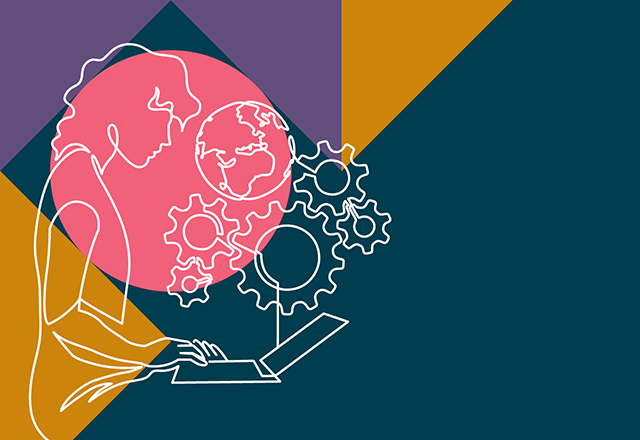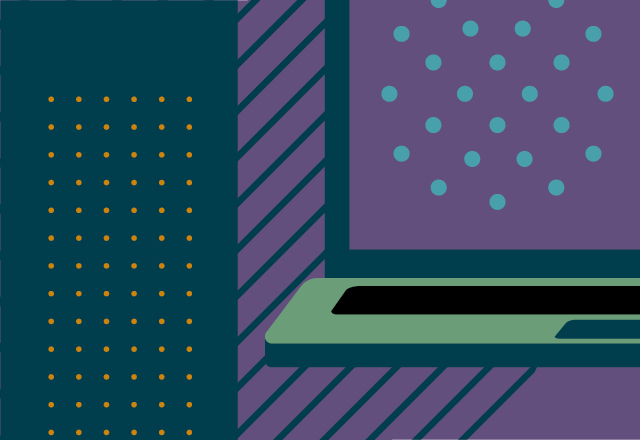Key takeaways
Thoughtworks has created a technology-driven sustainable transformation framework for radically overhauling the sustainability of your organization
The five capabilities of a Modern Digital Business provide a robust foundation for the changes required
Adding three further capabilities enables sustainable transformation
Business leaders face immense pressure from customers, employees and regulators to drive change and improve sustainability. At the same time, they need to ensure they have the digital capabilities to thrive and grow in today’s competitive markets.
On the surface, these look like largely separate challenges. Given that digital technology accounts for around 4% of global CO2 emissions, building out new digital capabilities can even seem to be in conflict with becoming a greener organization.
But digging a little deeper, it’s clear that developing the right digital capabilities is in fact critical to unlocking a more sustainable long-term future for your company. To ensure their effectiveness, these changes in your technology need to be driven by a sustainability mindset and supported by the right metrics and governance.
From a CEO and CFO’s perspective, it’s about looking beyond the digital transformation that may already be planned or underway at your organization and which will itself lay important foundations for driving further change as a Modern Digital Business. It’s about taking that digital transformation and enhancing it so that it becomes a sustainable transformation.
It’s about taking that digital transformation and enhancing it so that it becomes a sustainable transformation
The result should be an organization which is digitally equipped to compete in today’s marketplace and well-positioned to reduce its negative impact on the planet.
Beyond playing a responsible role in safeguarding the planet’s future, there is an additional strong reason for making sustainability central to your digital transformation and drive to become a Modern Digital Business. According to a recent study from BCG, companies that make sustainability a priority in their digital transformations are almost twice as likely to succeed than other organizations.
Companies that make sustainability a priority in their digital transformations are almost twice as likely to succeed than other organizations
Let’s roll back and look at the capabilities of a Modern Digital Business and see how this can support your sustainable transformation. After that we’ll examine the three key capabilities you’ll need to turn your digital transformation into a sustainable transformation.
Becoming a Modern Digital Business
Thoughtworks has defined five capabilities — you could call them building blocks — that combine to form the foundations of a Modern Digital Business:
1. Frictionless operating models — free from functional barriers, enabling the entire organization to align and mobilize around the creation of customer value
2. Platform strategy — using robust and versatile digital platforms that enable a “plug and play” approach to developing and integrating new products and services
3. Experience design and product capability — all geared to learn iteratively from customers and improve their experiences and the products being created for them
4. Intelligence-driven decision-making — using AI and machine learning to turn data into a strategic resource, automate routine choices and empower leaders with insights
5. Engineering culture and delivery mindset — defined by a deep knowledge of software practices, the skilled application of technology and integration of these into the business
As you can see, these five capabilities, which we have been refining since 2020, empower an organization to anticipate and embrace meaningful change at all levels. They support organizations in creating deeper insights based on data, experimenting fearlessly and going to market faster.
While we originally created the five capabilities to help organizations ultimately create greater customer value, they also set up a company exceptionally well to engage in a sustainable transformation.
With this in mind, we’ve added three new capabilities which, when added to the first five, will help an organization make a sustainable transformation.
Three new capabilities to enable a sustainable transformation
These are the three new capabilities that we believe enable sustainable transformation.
Sustainability in technology: Making the tech your organization uses leaner and greener
Sustainability by technology: Harnessing tech as a powerful force for green change
Sustainability mindset, metrics and governance: Inspiring change, establishing accountability and making your progress trackable and transparent to all stakeholders.
Let’s look at these three capabilities in more detail.
Sustainability in technology: Making your tech leaner and greener
Sustainability in technology means understanding and reducing the emissions and environmental impact of the technology your organization is using. Doing this maintains your credibility as an organization that cares about the environment.
Currently the digital sector creates nearly 4% of global CO2 emissions, which is on a par with the aviation industry. Data centres consume around 1% of the world’s electricity and demand for them is increasing rapidly — at the end of 2021 there were 728 hyperscale data centres globally, with the total predicted to reach 1,200 by 2026.
Thoughtworks is pioneering tools and techniques which help to make your data storage and computing leaner and greener. Among them is Cloud Carbon Footprint — an open-source tool we created that gives organizations complete and up-to-date visibility of their cloud usage and the emissions resulting from that use.
Cloud Carbon Footprint also provides tailored recommendations for both achieving sustainability goals and reducing costs. The detail it gives is granular enough to incentivize engineers to make small optimizations that add up to meaningful emissions and cost benefits over time.
Recently we’ve been working with Holaluz, the Spanish green energy company, to see how Cloud Carbon Footprint could help them cut down emissions from their cloud infrastructure. Cloud Carbon Footprint showed Holaluz how to potentially reduce their annual CO2 emissions by 20% by switching cloud workloads to servers in a region where greener energy can be used. It also showed how to cut monthly emissions by 14% by optimising computing resources in non-production environments.
It showed how to cut monthly emissions by 14% by optimising computing resources in non-production environments
Achieving sustainability in your organization’s use of technology could also mean following green software engineering principles. Green software is an emerging field, focused on developing more energy-efficient software and understanding the energy efficiency of different programming languages. The Green Software Foundation, backed by leading players in the tech industry — including Thoughtworks — is dedicated to building a trusted ecosystem of people, standards, tooling and best practices for green software.
The range of actions that can be taken to ensure sustainability in your organization’s technology is continually developing. For instance, best practices are being developed and refined to reduce carbon emissions significantly when training natural language processing models.
Sustainability by technology: Turning tech into a powerful force for green change
Sustainability by technology means leveraging technology to understand and improve sustainability across your wider business operations, products and services.
Techniques in this area are still emerging. But a fruitful approach involves using AI, machine learning, and decision science capabilities. These can be deployed to examine areas of an organization’s operations from a sustainability point of view and uncover opportunities for improvement and optimization.
Last year, we helped an international manufacturing and services company examine the sustainability of its entire supply chain — mapping out the emissions produced by the various elements. We flagged touchpoints where improvements could lead to significant emissions cuts.
The project also involved the creation of a bespoke simulator which enabled decision-makers to tweak assumptions and variables to quickly model how future supply chain scenarios would affect carbon dioxide emissions and financial costs.
Together with the client, we assessed the cost, timeframe and impact of more than 200 sustainability-related scenarios — from switching to electric vehicles (EVs) to changing raw materials — and the outcome was surprising.
Switching to EVs had the potential to reduce carbon emissions by 16.9% year on year, but was costly and would take time to implement. Switching to organic raw materials and incentivizing customers to choose new, more sustainable products would reduce emissions by 12.3% each year, have a negligible impact on business costs and take only weeks to make happen.
In fact, when we ranked the initiatives by the amount of emissions reduced, duration and cost, switching to EVs failed to make the top 10 for impact.
Working with Thoughtworks, the client has significantly accelerated progress towards its goal of providing carbon-neutral services by 2035.
Working with Thoughtworks, the client has significantly accelerated progress towards its goal of providing carbon-neutral services by 2035
Consumers and business customers are, more broadly, looking to make more environmentally-friendly choices, and technology allows companies to provide these options and confirm the sustainability credentials of their brands. There are real opportunities for companies to align with new expectations in the market, and leveraging technology could mean establishing a market-leading position ahead of competitors.
For instance, offering end users reliable information that helps them to make carbon-efficient decisions is a great way to get started. We’re now seeing flight search engines like SkyScanner listing flights with CO2 emissions data, and TravelPerk suggesting alternative transport modes based on carbon efficiency. Moreover we can also see maps applications like Google Maps flagging the most carbon efficient routes between source and destination points, and search engines with online marketplaces like Ecosia tagging products and even search results with sustainability indicators. ‘Eco modes’ can be created for digital products and services, and user demand can be shaped to account for carbon intensity.
Many Thoughtworks clients have begun incorporating sustainability into their external and internal customer experience strategies. For external customers, this could involve adding 'carbon aware' features to apps in a variety of ways. For internal customers, this could mean using visualizations, gamification and KPIs to, for instance, change user behavior in order to reduce air travel emissions.
Sustainability mindset, metrics and governance: Inspiring change, establishing accountability and making your progress trackable
Sustainable transformation means taking an organization from A to B, and human energy is required to make that journey happen. That needs visible leadership from the top, but the whole organization needs to be involved in creating its new, sustainable future.
To support a sustainable transformation, a sustainability mindset has to be created. Everyone from the CEO to the newest junior hire needs to align around net zero goals and be empowered to help achieve them.
A sustainability mindset can have many elements, and with buy-in across the organization, it should become organic. At Thoughtworks our sustainability mindset takes multiple forms — for instance, we’ve identified six United Nations Sustainable Development Goals to support and our employees work with partner organizations to support them. We’re also committed to the Science Based Targets initiative to reduce emissions, have active working groups on climate change and publish reports on our social impact and on responsible technology.
A steady flow of communications and initiatives is critical to building a sustainability mindset. For instance, a leading bank in the UK recently held a Sustainability Day, where Thoughtworks was pleased to deliver a workshop to help empower the engineering organization to incorporate sustainability into its day-to-day activities.
A successful sustainability mindset will incorporate and be supported by the right governance and metrics, giving the organization levers and measures to help steer its progress in a more sustainable direction, including in the way it uses technology. One company we have advised settled on a corporate sustainability goal of minimizing hardware and software upgrades, in order to reduce its carbon footprint.
To succeed in a sustainable transformation, a new way of thinking needs to be established across the company. To quote Albert Einstein: “we cannot solve the problems using the same kind of thinking we used when we created them.”
To succeed in a sustainable transformation, a new way of thinking needs to be established across the company
Sustainable transformation: the way forward
Balancing your organization’s drive for growth with green initiatives is a must, but still isn’t easy to put into practice. We hope our sustainable transformation framework offers a way to cut through the noise around ESG and focus on meaningful changes.


















